Premier League
Why Qatar's sportswashing project is surviving World Cup controversies
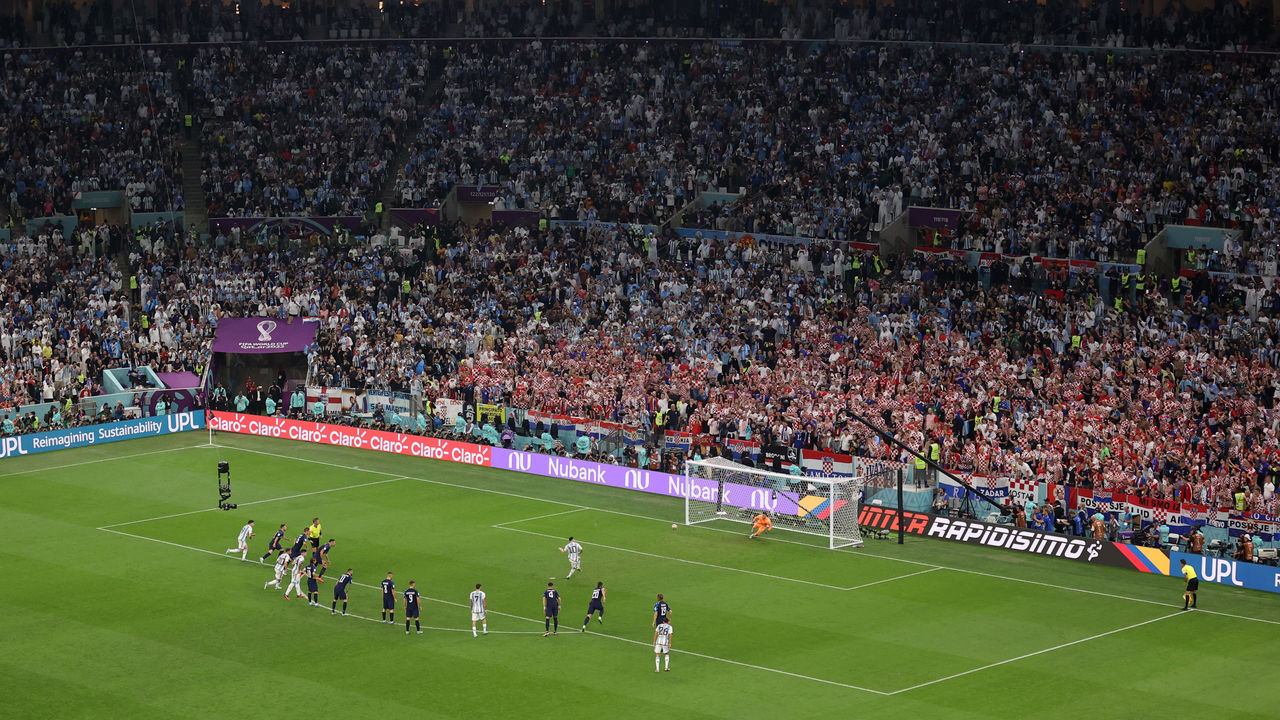
The 1934 World Cup was dictator Benito Mussolini’s propaganda showpiece.
The Fascist anthem “Giovinezza” was sung at each game. The regime’s flags flew. Even FIFA’s commemorative postage stamps included Fascist insignia. Mussolini, whose appearances at matches were rapturously received, reveled in showcasing the might of Italy in front of locals and visitors from abroad. The Azzurri won the tournament with the help of dubious refereeing decisions.
The term “sportswashing” is widely believed to have existed for less than a decade, but the practice itself is much older.
“Using sport to launder your nation’s reputation or to turn attention away from bad things your government is doing has a long history of working,” University of Guelph history professor Alan McDougall, who studies sportswashing, told theScore. “I think that’s something we don’t want to face up to, but history tells us that’s true.”
Qatar has arguably undergone the most expensive sportswashing project in history. Research from the BBC found the cost of the 2022 World Cup reached $220 billion before the tournament kicked off in November – a total over three times larger than the previous eight World Cups combined.
The result of this vast expenditure is seven brand-new stadiums plus one thoroughly renovated venue, countless hotels, a transit system, roads, and other infrastructure. Another outcome of Qatar’s World Cup is a level of media scrutiny that the Gulf nation appeared unprepared for when it was awarded the event in 2010.
Human rights groups estimate thousands of migrant workers died while constructing projects relating to the tournament, while many more suffered abuses such as injury and wage theft. Members of the LGBTQ+ community were “arbitrarily” detained and beaten by Qatari security forces in the lead-up to the World Cup, according to Human Rights Watch, and there were accounts of match-goers being denied entry into stadiums while wearing clothing or carrying personal items featuring designs vaguely resembling the rainbow flag.
Qatar is accused of deliberately using a major international sporting celebration to conceal these problems. But, unlike sportswashing projects of the past, Qatar’s plan seems to have staying power. The World Cup isn’t one rudimentary tool designed to fortify a shady regime – it’s just one part of a long-term aim to raise the reputation and ambitions of a tiny, oil-rich state.

“They’re in it for the long haul. Earlier examples of sportswashing are bloody regimes that are using football as a fig leaf to cover up for a nasty dictatorship – Fascist Italy, Nazi Germany, the Argentine military dictatorship,” McDougall said, also referring to the 1936 Olympics and 1978 World Cup. “Whereas here you’ve got these authoritarian, wealthy, monarchical regimes which are using sports very strategically and very savvily, I would say, to really build a nation’s brand.”
Brand wars
Qatar isn’t alone in crafting this game plan. Its Gulf neighbors are also trying to boost their respective images through sports, and money isn’t much of an obstacle in a region where fossil fuels were discovered throughout the 20th century.
“Oil and gas have done a lot of things to the Gulf, but one thing that they’ve done to all these countries – like the Emirates and Qatar and Kuwait and Saudi Arabia – is that they’ve given the governments great ambition that they couldn’t have had before. One of those ambitions is to be influential players on the world stage,” said Sean Yom, an associate professor of political science at Temple University and expert on Middle Eastern affairs.
“There has been growing recognition by the governments of these countries that hosting large, prominent, famous competitions that take worldwide relevance can instantly skyrocket the visibility and the prestige of their so-called national brand,” he added.
Before the World Cup graced the Arab homeland for the first time this winter, the Gulf’s influence over football was already significant.

French champions Paris Saint-Germain are owned by Qatar Sports Investments. The City Football Group, which is majority owned by a member of the Abu Dhabi Royal Family’s private equity company, presides over English giants Manchester City – who won their fourth English title in five years last season – while holding stakes in 10 other clubs across Australia, Asia, Europe, North America, and South America. The sovereign wealth fund of Saudi Arabia commenced an ambitious project with Manchester City’s Premier League rivals Newcastle United in 2021 and, away from football, has notably rocked one of the globe’s most traditional sports with the advent of LIV Golf.
The biggest sports events – namely the Olympics and World Cup – have also become more accessible to the Gulf and other parts of the world desperate to improve their international standing. The 2026 World Cup in North America increasingly stands out as an anomaly since the competition has traversed more diverse regions over the past 20 years, like Japan and South Korea’s joint venture in 2002, South Africa in 2010, Russia in 2018, and Qatar in 2022. Almaty, Kazakhstan’s largest city, finished only four votes adrift of Chinese capital Beijing in a head-to-head bidding race for the 2022 Winter Olympics.
The costs and other unsavory aspects of hosting such events are increasingly unappealing to nations in Europe and North America, forcing the biggest sports organizations to look elsewhere for venues and income.
“Democracies are having a hard time, for economic and environmental reasons, in putting forward cases for hosting an Olympics or a World Cup,” McDougall explained. “So, I think the field might be open for years for petro-states to be the only people who’d be willing to host.”

The Gulf rivalries obviously extend beyond each state’s sporting outreach. Qatar was effectively isolated in 2017 when Saudi Arabia, Bahrain, Egypt, and the United Arab Emirates created a “blockade.” The severing of diplomatic relations with Qatar meant there was an air, land, and sea embargo on the nation, with its neighbors accusing the World Cup host of financing terrorism and strengthening its ties with Iran.
Although the four countries reversed course early in 2021 and vowed to rebuild relations with Qatar, jealousy and rivalries were still rampant as the Gulf states’ efforts to enlarge their imprint on regional and global affairs continued unabated.
Given that Qatar’s construction and commercialization boom largely occurred in this century, its rise to challenge Saudi Arabia’s status in the Arab world has irritated plenty of those living across Qatar’s only land border. A Saudi insult for Qatar is to sneeringly describe it as a “big fart” that hangs off Saudi Arabia, emitting lots of unpleasant gas, but Yom believes this jibe is aired by the more “chauvinistic” sections of society.
The heated relationship between Qatar and its neighbors made developments during the World Cup more surprising. In a deliberate display of unity, Qatar’s emir, Sheikh Tamim bin Hamad al-Thani, and Crown Prince Mohammed bin Salman of Saudi Arabia held hands during the opening ceremony of the World Cup. Each leader was also pictured wearing a scarf bearing the colors of the other’s flag.
The bonds appear stronger among fans at the tournament as well. Many Saudis are proud of the World Cup getting its first Arabic facelift despite it not being in their country, while plenty of Qataris delighted in Saudi Arabia’s surprising win over Argentina in its group opener. This apparent accord with Saudi Arabia can only be a good thing for Qatari diplomacy – even if it’s just to keep its enemy closer.
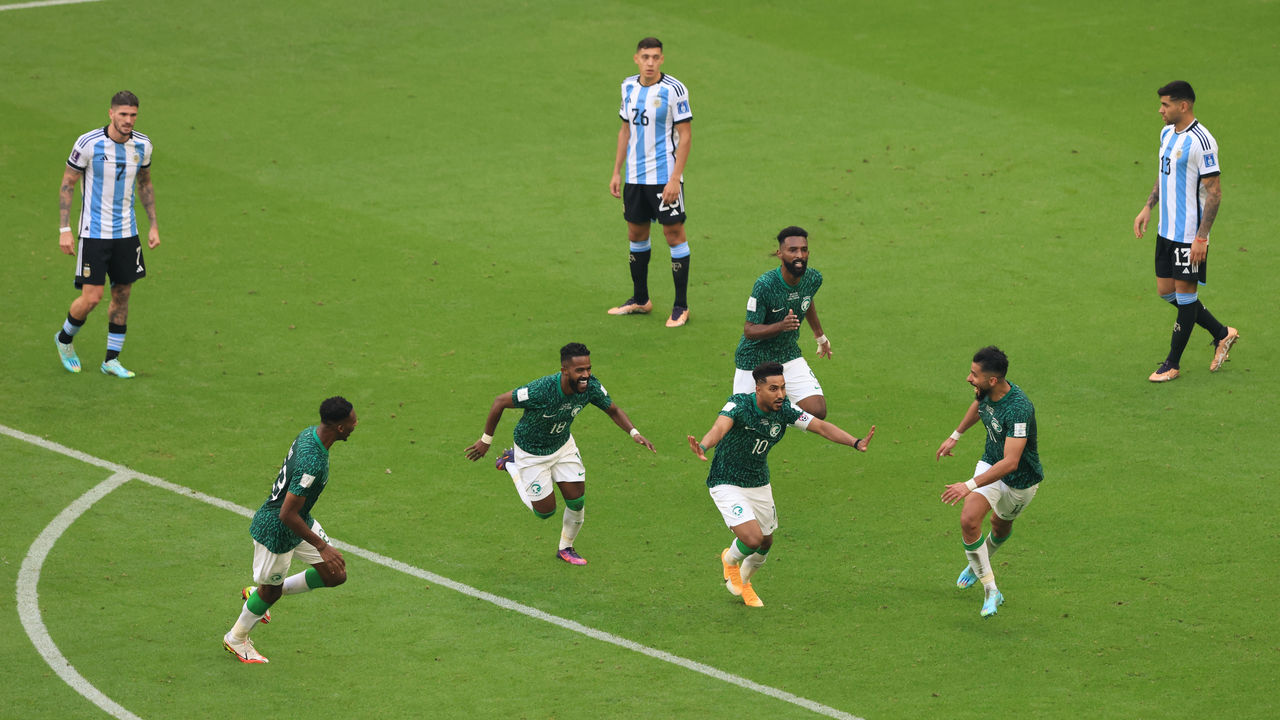
Success ‘turns a blind eye to everything’
The outrage at Qatar’s human and labor rights practices was at fever pitch before the World Cup kicked off. It seemed every media outlet ran stories chastising Qatar’s blatant sportswashing scheme – this one included – while FIFA urged the 32 competing teams to “focus on football” rather than political and social concerns. The deaths and abuses were in danger of forever damaging Qatar’s World Cup legacy.
But then the tournament started.
“If the idea is to put your country on the map through spending a large amount of money to host a big sports event, then Qatar has succeeded despite the controversies,” McDougall said.
McDougall wasn’t surprised at how the criticism cooled while an intriguing tournament pinched the spotlight. Sporting success “turns a blind eye to everything,” he shared, citing the example of Newcastle’s takeover by Saudi Arabia’s sovereign wealth fund. Initially, the deal for the English club was shrouded in controversy due to the Saudis’ human rights issues; the criticism hasn’t completely subsided, but praise of manager Eddie Howe and some of the Magpies’ expensive recruits, like Brazilian midfielder Bruno Guimaraes, is beginning to dominate the narrative. The Saudis’ success story in England is gradually nudging the regime’s grim practices at home into the background.
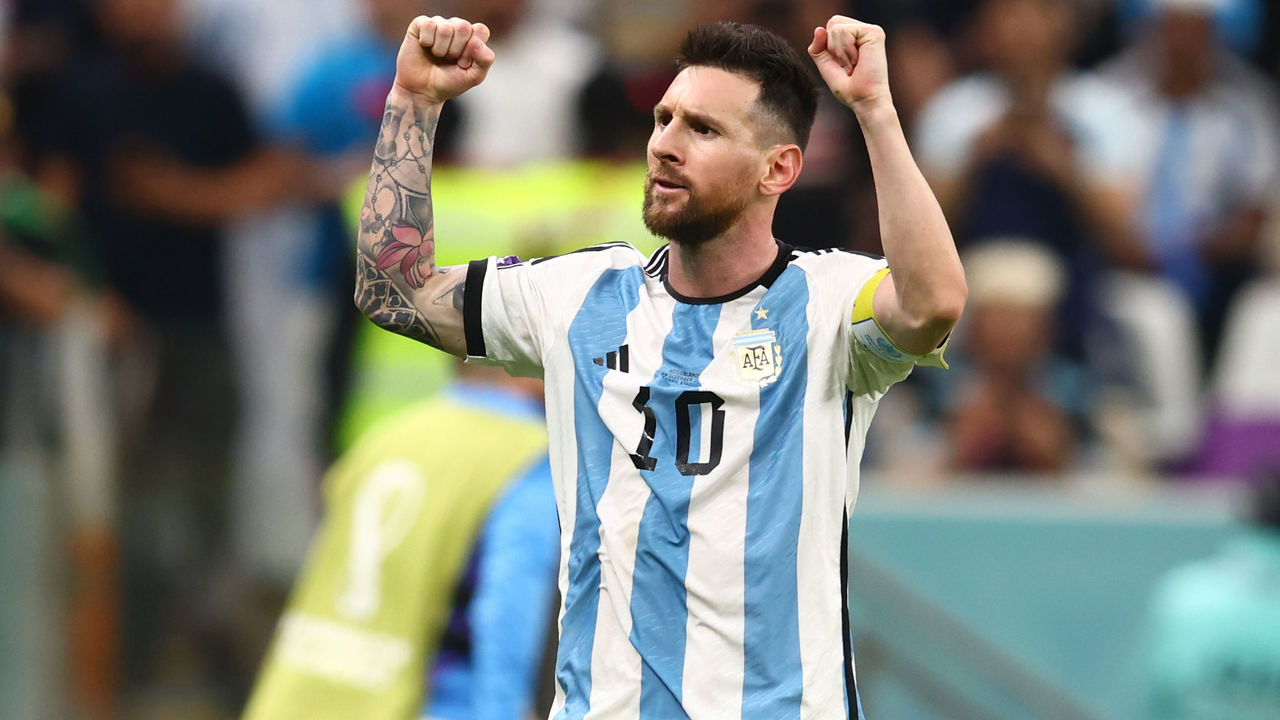
And could there be a bigger smokescreen for Qatar’s well-documented problems than concluding an exciting tournament with Sunday’s glittering World Cup final between Lionel Messi’s Argentina and Kylian Mbappe’s France?
“The average casual football fan 10-15 years from now is not going to remember the media hubbub over migrant rights and human rights violations in Qatar this year, but they will remember, for instance, the Moroccan breakthrough in Qatar in 2022,” Yom told theScore. “They’ll remember the time the World Cup was in the Middle East, they’ll remember the extraordinary logistics that may have gone into this event. I think that is the enduring legacy that Qatari officials want from the World Cup, and I think they’ll get it.”
Unlike the World Cup in Mussolini’s Fascist Italy, Qatar isn’t trying to attract tourism or flex its military muscles. Even business isn’t a concern – its gas will remain a coveted and extremely profitable asset. The World Cup was simply an opportunity for Qatar to showcase why the modern civilization it fashioned on a dusty peninsula is capable of staging an event for everybody. The deaths and the treatment of the LGBTQ+ community will sadly be overwhelmed by the prominent conversations about the final, and they won’t be among the main talking points when club football restarts just a few days later.
Instead, the World Cup will be neatly boxed away, available for any sports fan to pull off the shelf and peer into whenever they like. A product for the world to enjoy, with love from Qatar.
Copyright © 2022 Score Media Ventures Inc. All rights reserved. Certain content reproduced under license.
You may like
Premier League
Breaking down thrilling EPL title race with 10 games left
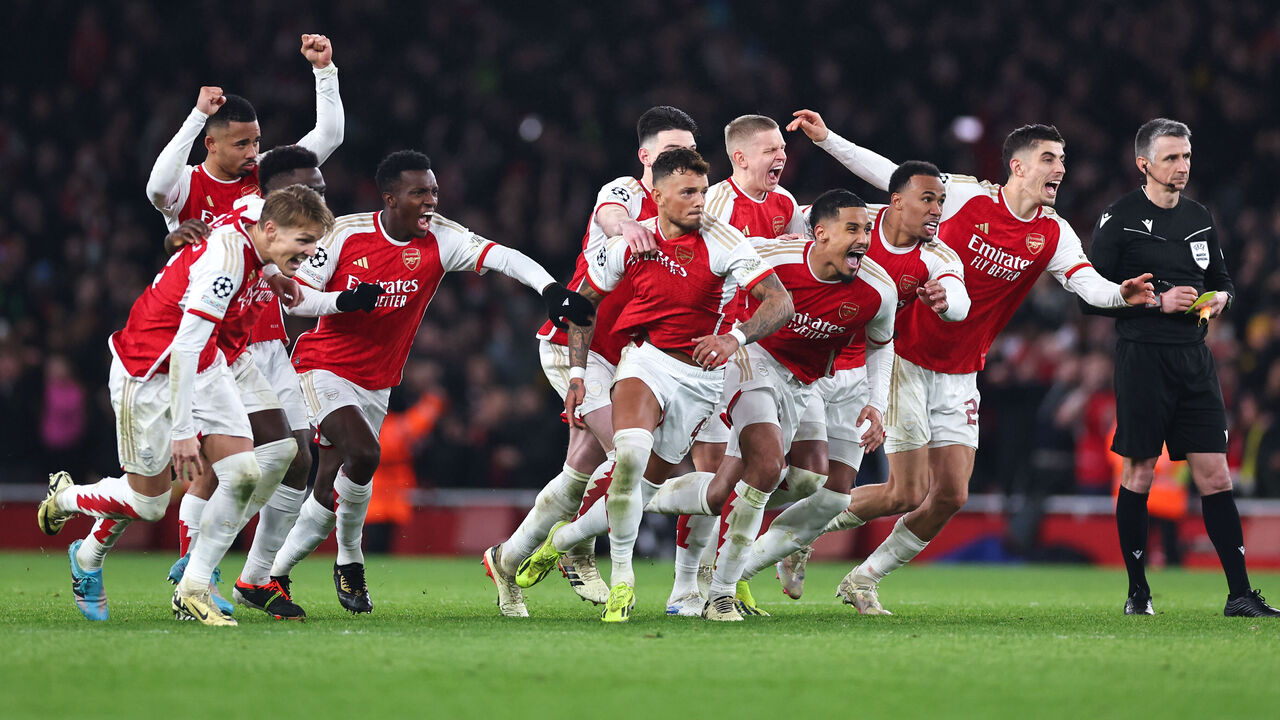
Find the biggest stories from across the soccer world by visiting our Top Soccer News section and subscribing to push notifications.
One of the most intoxicating title races in Premier League history is, mercifully, ready to resume.
The quirks of the calendar – an FA Cup weekend succeeded by an agonizing international window – means the titanic tussle between Arsenal, Liverpool, and Manchester City will have been on hiatus for a full three weeks before it gets back underway on Sunday.
But there are no more impending interruptions. With 10 matches remaining for each title contender, we’re barreling toward a resolution to the type of three-way battle that’s exceedingly rare in England’s top flight. There’s never been a season in the Premier League era where three teams went into the final day with a chance to hoist the trophy. This could be it. The last time it happened was the 1971-72 campaign, when Derby County won an incredible four-team fight, narrowly beating Leeds United and, ominously, Liverpool and Man City to the crown. We’re overdue for that kind of drama.
That three sides have converged this way at all is, frankly, remarkable.
These are the three best teams in the country by an enormous margin. They’re the only ones with an expected goal difference per game of plus-1.0 or greater this season. The next best mark, surprisingly, belongs to Mauricio Pochettino’s erratic Chelsea team at plus-0.36. So, yeah, it’s not close.
The three of them are also on a tear and show no signs of slowing down. Arsenal have won all eight of their league games in 2024, scoring 33 goals in the process; Liverpool have collected 22 of a possible 27 points in that time; reigning champions Manchester City have racked up 23 of 27 points. They’ve combined for just one loss since the calendar flipped – Liverpool’s 3-1 defeat against Arsenal in early February.
The only sides that look capable of halting their progress are each other, which makes this weekend’s clash between Manchester City and Arsenal at the Etihad all the more significant.
Each contender has a compelling reason for believing it’s “their” year.
Arsenal
Mikel Arteta’s men look far more assured and mature than last season when they set the pace for nearly the entire campaign, only to crumble down the stretch and relinquish their once sizeable advantage to Manchester City. Do-it-all superstar Declan Rice has been a transformative figure in midfield, while Kai Havertz, after an inauspicious start, is becoming an increasingly vital and consistent scoring threat. At least from the outside, there appears to be more self-belief within the Arsenal camp. Having learned from their experience in 2022-23, Arsenal won’t cede top spot so easily this time. It’ll need to be ripped from them.
Some may be inclined to dismiss their recent run because of their opponents. Yes, the Gunners have played some weak teams – Sheffield United! Burnley! Nottingham Forest! – but, for the most part, they aren’t just beating them; they’re blowing them away with a ruthlessness usually associated with title winners. For those still unconvinced, Sunday’s visit to the Etihad, where they were tossed aside like a rag doll in last season’s 4-1 loss, will be the ultimate litmus test to see if this team is ready to end the club’s 20-year title drought.
Liverpool
Jurgen Klopp’s persistent squad, already with the League Cup in tow, aims to send off their departing bench boss in style. Liverpool have been the most entertaining team of the trio this season. They create more chances than Arsenal and City and concede more opportunities. Darwin Nunez, the ultimate agent of chaos on a football pitch, is the perfect fit for a team with a habit of scoring late goals and delivering dramatic moments. Their title charge is built on more than just vibes, though.
Liverpool overwhelmed none other than City in their last league game before the international break but came away from the pulsating affair at Anfield with a 1-1 draw. City, usually self-confident and domineering in possession, simply held on against what Pep Guardiola dubbed a “tsunami” of pressure. There was obviously some added incentive at play, but Liverpool are built to go full speed regardless of the opposition. It’s in their nature under Klopp.
Manchester City
Despite not being at its vintage best this term, Guardiola’s accomplished crew remains the favorite in the eyes of many who, for good reason, simply refuse to pick against them. We’ve been conditioned to feel like City will inevitably be the last team standing because, well, they usually are. Five titles in the previous six seasons will have that effect on the collective psyche. However, Erling Haaland isn’t replicating his ferocious scoring pace from last season, and Kevin De Bruyne has been limited to six league starts. Also, outside of some electrifying Jeremy Doku performances, the summer signings haven’t exactly set the world alight. And yet, here they are, just one point off the top, showing the quiet confidence and tranquility that can only be obtained through winning experiences.
With Phil Foden leading the way and authoring arguably the best season of anyone in the league, City could become the first team in English history to win four consecutive top-flight titles.
Strength of schedule
On paper, Arsenal have the most difficult fixture list.
Their remaining opponents average 41.8 points this season, roughly corresponding to ninth place in the table. Put another way, it would be the equivalent of playing Wolves (41 points) or Brighton (42) each week. It doesn’t help that many of Arsenal’s toughest matches are away from home. Coincidentally, they have upcoming trips to Brighton and Wolves, along with north London rivals Tottenham and Manchester United, following this weekend’s potentially decisive tilt at the Etihad. It’s tough.
Manchester City’s task is slightly more forgiving, as their remaining opponents average 40.7 points or 10th place.
Liverpool appear to have the most favorable schedule of the trophy chasers, with their opponents averaging 38.4 points, a tally representing the haul of a team in the bottom half of the table. While that’s better than the alternative, it’s not quite so simple for the Reds. On the back of a potentially draining Europa League quarterfinal second leg against Atalanta in mid-April – more on that soon – Klopp’s men have three away games in seven days against Fulham, Everton, and West Ham. In addition to battling their local nemesis, who could still be scrapping for survival at that point, Liverpool will also face a rambunctious Goodison crowd that would love nothing more than to play a critical role in stopping their hated rivals from winning another league crown.
Aston Villa and Spurs, meanwhile, stand out as common foes for all three title hopefuls. Sitting fourth and fifth, respectively, and engaged in their own fight to secure a Champions League place, they could play the role of kingmakers this spring.
European commitments

Balancing the mental and physical demands of domestic play with continental competition is a huge piece of this puzzle for all three teams. Midweek success can further galvanize a group, but taxing failures can cripple a team’s momentum at home.
Much like the domestic schedule, Liverpool seem to have an edge here. Arsenal and Manchester City will face European behemoths Bayern Munich and Real Madrid in a pair of mouthwatering Champions League quarterfinal ties beginning next month. However, Liverpool have a comparatively charitable Europa League encounter with Atalanta.
If they both advance, Arsenal and City will meet in the Champions League semifinals, an outcome that will surely be celebrated wildly on Merseyside.
How those games intermingle with the league schedule also matters. Liverpool play Crystal Palace and Fulham following their two matchups with the Italian outfit. After locking horns with Bayern, Arsenal have to contend with Aston Villa and Wolves. Manchester City, still active on three fronts as they seek a second consecutive treble, host lowly Luton after the first leg of their Real Madrid rematch and take on Chelsea in the FA Cup semifinals following the second leg.
Injury concerns

Liverpool have been plagued by injuries all season. Mohamed Salah, Trent Alexander-Arnold, Darwin Nunez, Diogo Jota, and Andy Robertson, among others, have missed varying amounts of time, though the bulk of that group is getting back to full fitness. Alisson Becker remains sidelined and might not return until mid-April. Defensive stalwart Virgil van Dijk is the only Liverpool player to garner over 2,000 league minutes this season, indicating how disruptive injuries have been for Klopp’s team. And yet, they persevere.
Five Manchester City players have cleared the 2,000-minute mark thus far, and a couple more are on the cusp. But the club was without De Bruyne for the entire first half of the season, while trips to the treatment room ravaged Jack Grealish’s year. City also got hit the hardest by the recent international break, with John Stones and Kyle Walker hurt on England duty and racing against time to recover for Sunday’s match versus Arsenal. Swiss defender Manuel Akanji is in the same boat, and Ederson’s return date from a thigh injury remains uncertain. Never shy about tweaking his lineup, Guardiola could be forced to tinker yet again.
Arsenal have been largely unscathed, with six players eclipsing 2,000 league minutes. William Saliba, whose absence last season played an outsize role in Arsenal’s capitulation, has been on the pitch for every second of league play in 2023-24. Gabriel Jesus has battled ailments all year, and Jurrien Timber suffered an ACL injury just 49 minutes into his Premier League debut in the season opener. But the Gunners will be hoping their relative good fortune on the injury front extends right through May, especially as it relates to Bukayo Saka, who pulled out of the England squad to nurse a minor muscular issue.
Prediction

First, a disclaimer: Luck will play a pivotal role in determining which team is crowned on May 19. Injuries will continue to be a factor. There will almost certainly be contentious refereeing and VAR decisions that favor and oppose the title challengers. There will also be finishing variance, with players missing seemingly easy chances and converting more difficult opportunities.
Impossible to predict? No matter. We’re not going to let that stop us.
Considering their advantageous schedule, at home and in Europe, along with their improving squad health at just the right time and the inescapable feeling that this is a team of destiny determined to send their beloved manager out on a high, we’re going with Liverpool, who’ll collect 88 points to pip their rivals and again interrupt Manchester City’s run of domestic dominance.
Copyright © 2024 Score Media Ventures Inc. All rights reserved. Certain content reproduced under license.
Premier League
Euro 2024 playoffs: Miraculous Ukraine comeback, big result for Wales

Find the biggest stories from across the soccer world by visiting our Top Soccer News section and subscribing to push notifications.
Wales, Greece, and Poland registered statement wins Thursday, joining three other teams in next Tuesday’s playoff finals for the three remaining places at Euro 2024.
Ukraine staged an incredible late comeback against Bosnia and Herzegovina in its semifinal to keep its Euro dream alive.
The highest-placed team in FIFA’s rankings that’s no longer in contention to reach the tournament in Germany is 60th-placed Finland.
Here’s how the playoff semifinals across Path A, B, and C played out.
Path A
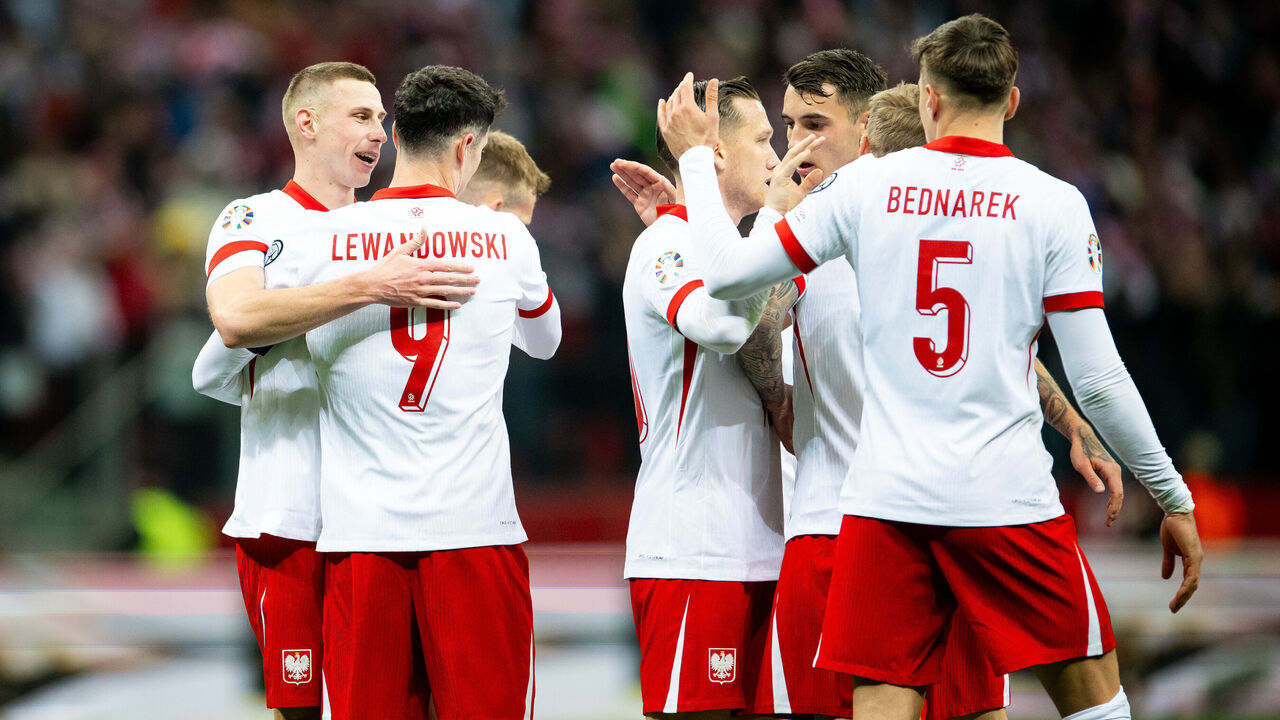
Poland 5-1 Estonia
Estonia barely stood a chance. Down to 10 men as early as the 27th minute, the northern Europeans could only muster a consolation goal in a 5-1 loss to Poland. The Polish achieved the rout without Robert Lewandowski getting on the scoresheet and remain unbeaten in 21 Euro qualifiers at home, a magnificent run dating back to September 2006. Poland is trying to make up for a poor qualifying campaign in which it finished third in Group E, four points behind the Czech Republic and Albania. The country hasn’t missed the Euros since 2004.
Wales 4-1 Finland
The Red Wall might descend on Germany this summer. Wales’ raucous supporters have legitimate hopes of traveling to another major tournament after the Dragons scorched Finland without the retired Gareth Bale and with Aaron Ramsey, 33, on the bench after more injury problems. Teemu Pukki gave the visiting team some hope just before halftime following well-taken finishes from David Brooks and Neco Williams. But Wales needed just 73 seconds of the second period to restore its two-goal cushion via Brennan Johnson’s tap-in. Daniel James took advantage of a defensive error before rounding the goalkeeper in the 86th minute to give the host a resounding victory.
Playoff final: Wales vs. Poland, Tuesday 3:45 p.m. ET
Path B
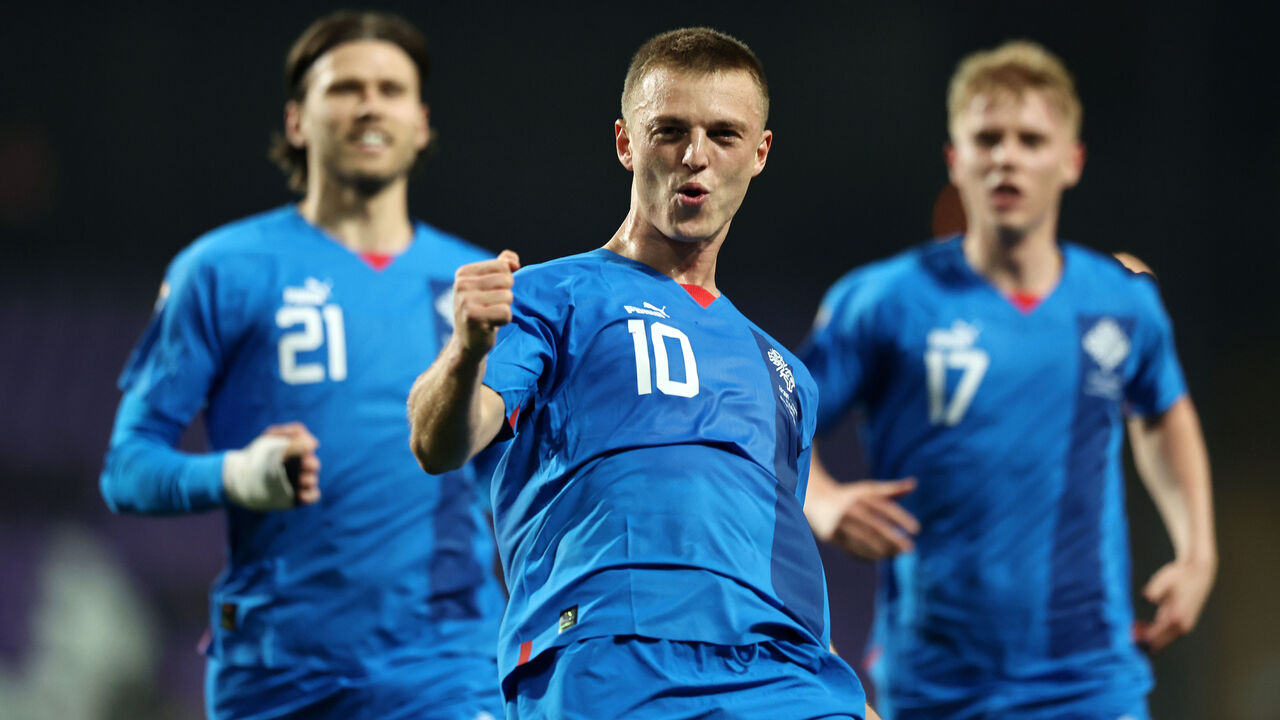
Israel 1-4 Iceland
Iceland’s Albert Gudmundsson stole the show with an emphatic hat-trick against Israel on Thursday. His stunning free-kick into the top right corner canceled out Eran Zahavi’s opening goal for Israel, and he created a nice cushion for his country with a pair of markers in the final 10 minutes. Just before that, Zahavi blew an incredible opportunity to equalize the match at 2-2, missing a penalty awarded for handball against Iceland’s Gudmundur Thorarinsson. A red card to Israel’s Haim Revivo didn’t help the trailing side. Iceland is now a game away from making only its second-ever appearance at the Euros following its quarterfinal run in 2016.
Bosnia and Herzegovina 1-2 Ukraine
Ukraine scored twice with just minutes remaining in regulation to snatch what seemed to be a sure victory from Bosnia and Herzegovina on Thursday. Bosnia controlled play for most of the match and took the lead in the 56th minute when Mykola Matviyenko turned in Amar Dedic’s shot into his own net. But a colossal defensive lapse cost the Bosnians a chance to make it a record four countries from the former Yugoslavia at Euro 2024. Roman Yaremchuk came off the bench to equalize in the 85th minute and teed up Artem Dovbyk’s sensational winning header three minutes later to turn the playoff semifinal on its head. Ukraine now faces Iceland with a third consecutive Euro appearance at stake.
Playoff final: Ukraine vs. Iceland, Tuesday 3:45 p.m. ET
Path C
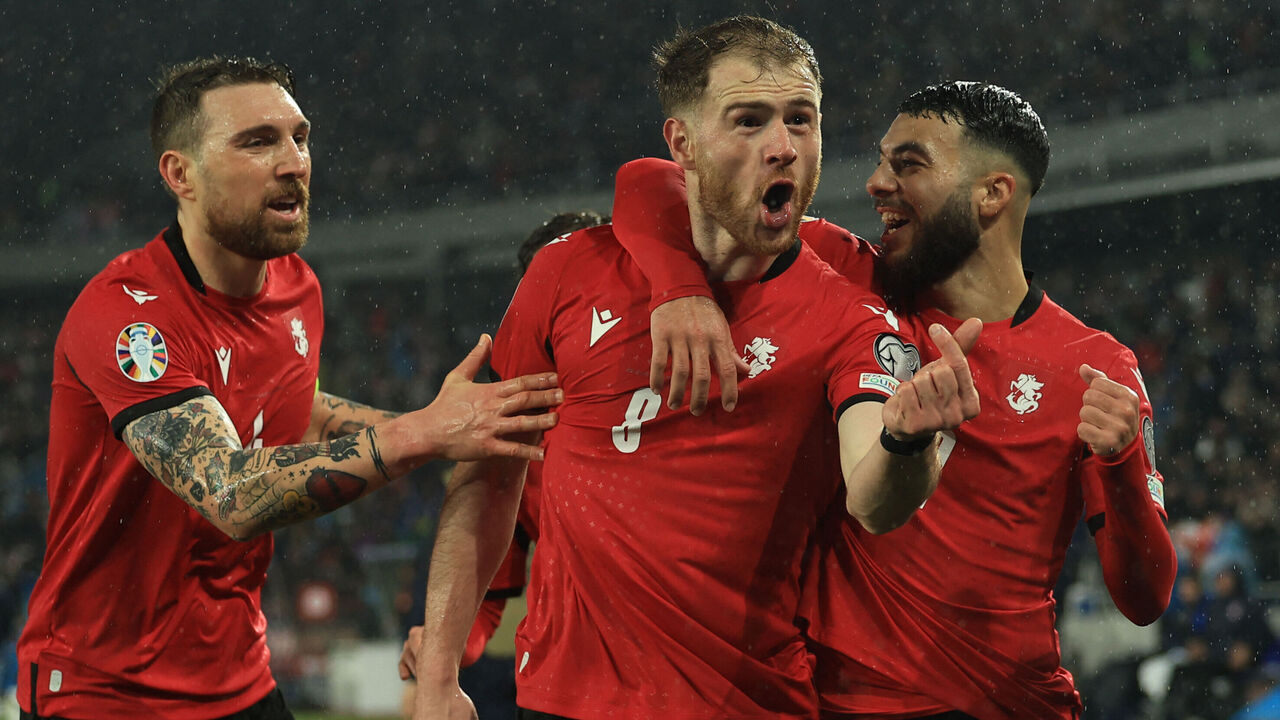
Georgia 2-0 Luxembourg
Two clever finishes from Budu Zivzivadze in Tbilisi assured Georgia of a place in Path C’s final – and all without the help of suspended talisman Khvicha Kvaratskhelia. But it wasn’t that simple for the host. Luxembourg thought it equalized during the second half, only for the goal to be eventually snatched away due to Maxime Chanot’s apparent foul 45 seconds earlier. Luxembourg’s Chanot was controversially sent off for denying a clear goal-scoring opportunity, and Zivzivadze effectively ended the match six minutes later with his second strike. Kvaratskhelia is available for the final.
Greece 5-0 Kazakhstan
Anastasios Bakasetas lashed home a penalty, Dimitrios Pelkas headed into the net’s roof, Fotis Ioannidis tapped in from close range, and Dimitrios Kourbelis added another header. And that was all before halftime. Kazakhstan’s impressive 2022-23 Nations League campaign and notable Euro 2024 qualifying wins over Denmark, Northern Ireland (twice), and Finland suddenly seemed ages ago, as Greece recorded its biggest halftime lead since October 1978 (5-0 against Finland). Aleksandr Marochkin’s embarrassing own goal in the 85th minute made Kazakhstan’s day even worse.
Playoff final: Georgia vs. Greece, Tuesday 1:00 p.m. ET
Copyright © 2024 Score Media Ventures Inc. All rights reserved. Certain content reproduced under license.
Premier League
Look: Nike unveils beautiful kit selection for Euro 2024, Copa America
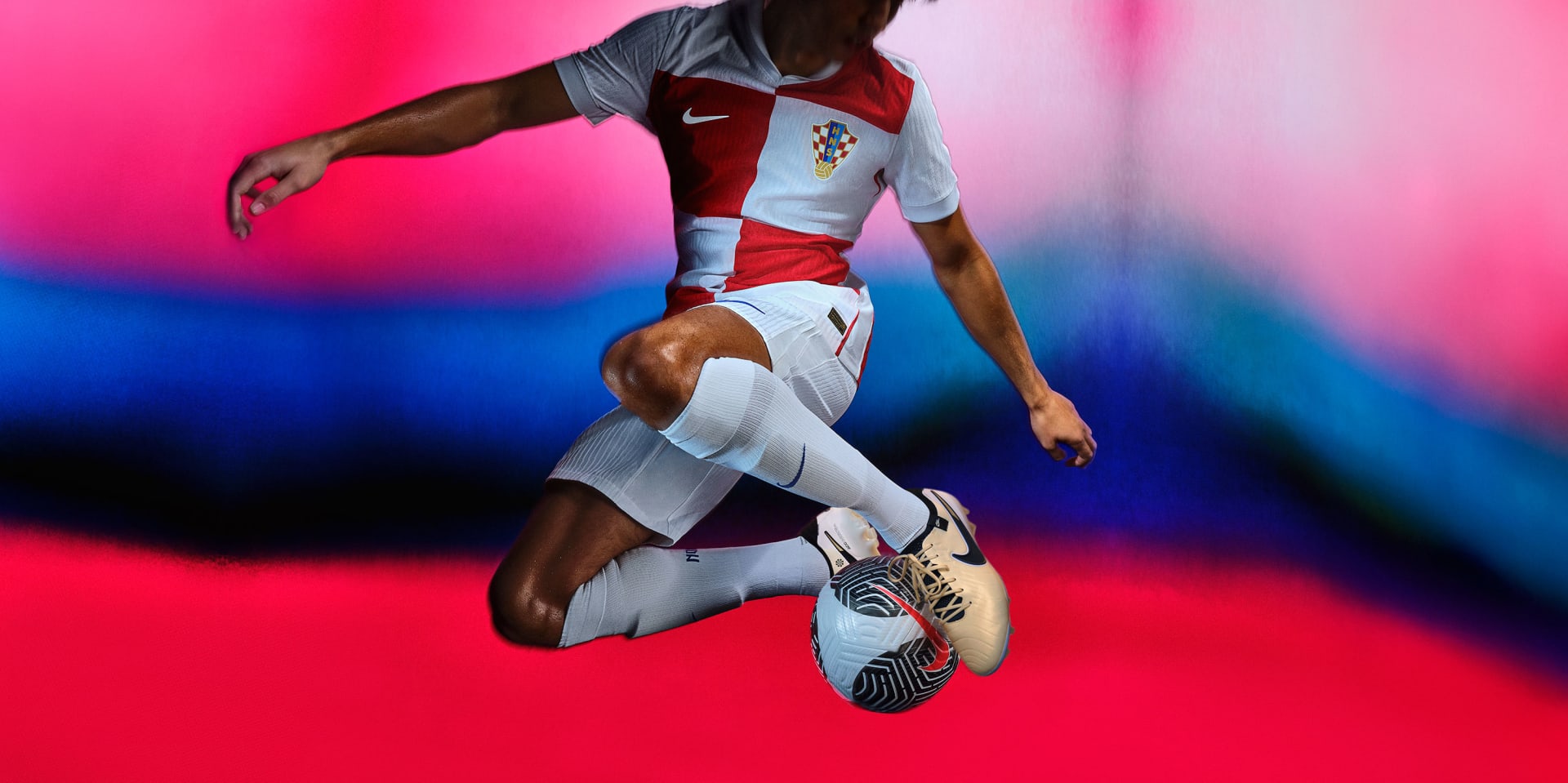
Find the biggest stories from across the soccer world by visiting our Top Soccer News section and subscribing to push notifications.
Nike released a stunning batch of threads ahead of Euro 2024 and Copa America on Monday.
Days after Adidas launched its lineup for the summer’s top two tournaments, Nike followed suit with an array of colorful designs.
The U.S. manufacturer also announced redesigns for Canada and Poland, even though they’ve yet to qualify for their respective tournaments. The Canucks face Trinidad and Tobago in a one-off Copa America qualifier on Saturday, while Poland must navigate a four-team playoff to reach Euro 2024.
(All images courtesy of Nike)
Euro 2024
Croatia
Home
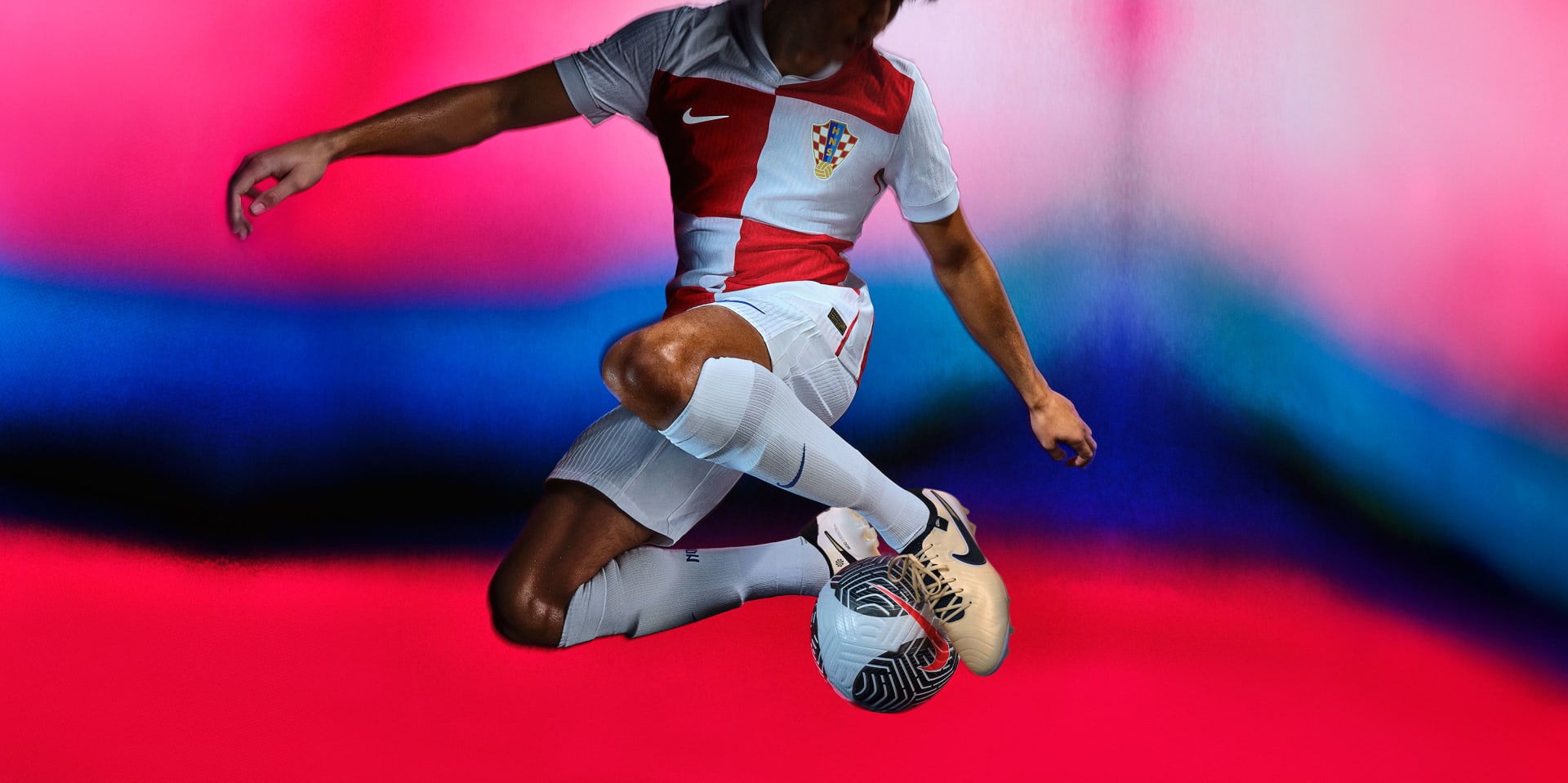
The square-shaped design that gives Croatia its unique look gets a slight upgrade. The home shirt features larger squares than ever before.
Away

Croatia’s away shirt plays on the national flag, with the traditional checkered pattern now on a slant.
England
Home

Influenced by England’s 1966 training gear, the home shirt has a classic feel with a rich blue collar and gorgeous trim along the cuffs.
Away
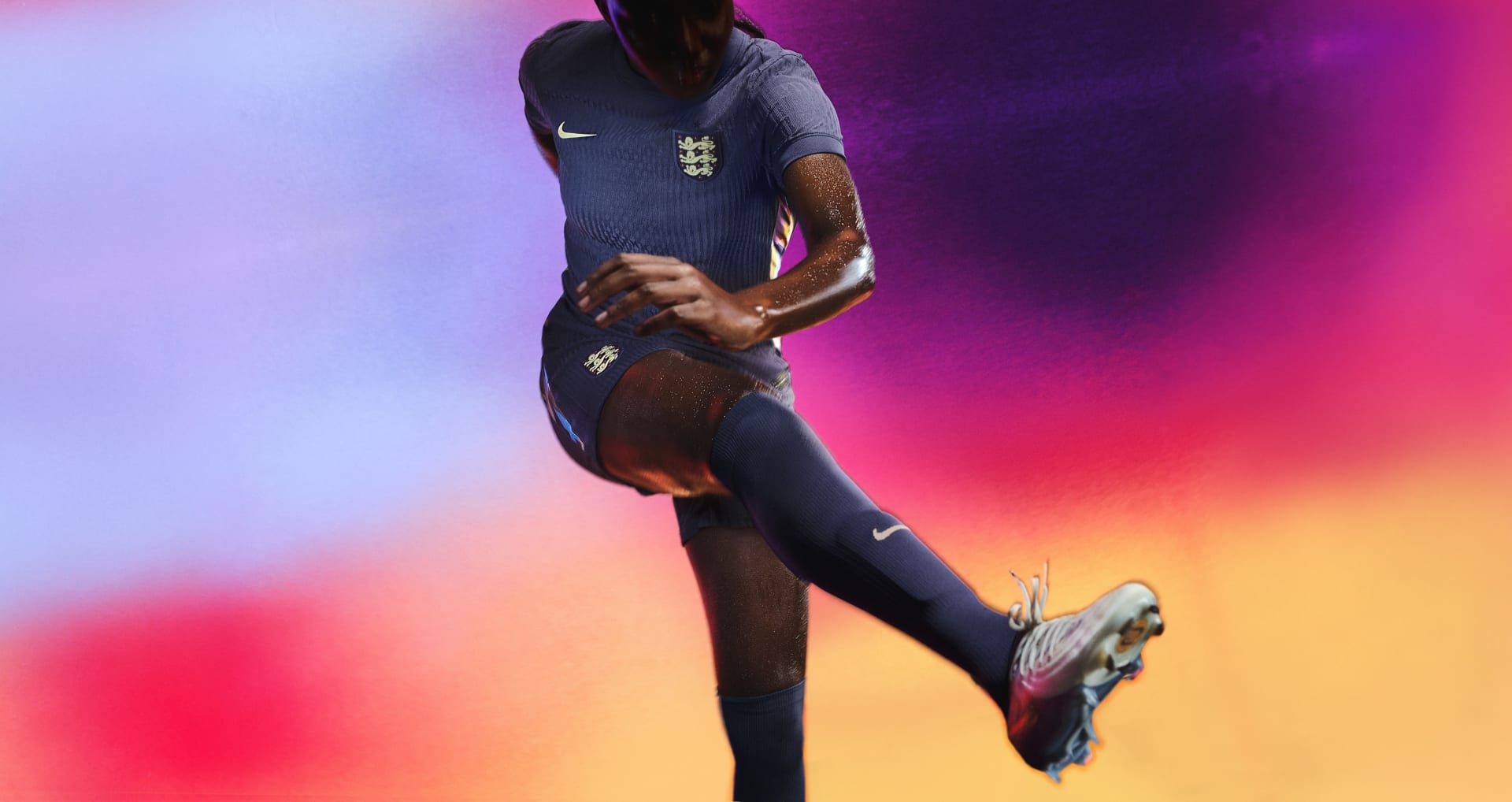
England embraces a deep purple hue for its away selection. The crest stands out with a contrasting off-white tint that makes the three lions pop.
France
Home

France’s home shirt may have the biggest crest of all of Nike’s offerings. The oversized rooster defines this shirt as much as the royal blue that’s made France’s kits a crowd-pleaser.
Away

The pinstripes mirror the colors of France’s national flag and span the width of the shirt in a simple, yet elegant design.
Netherlands
Home
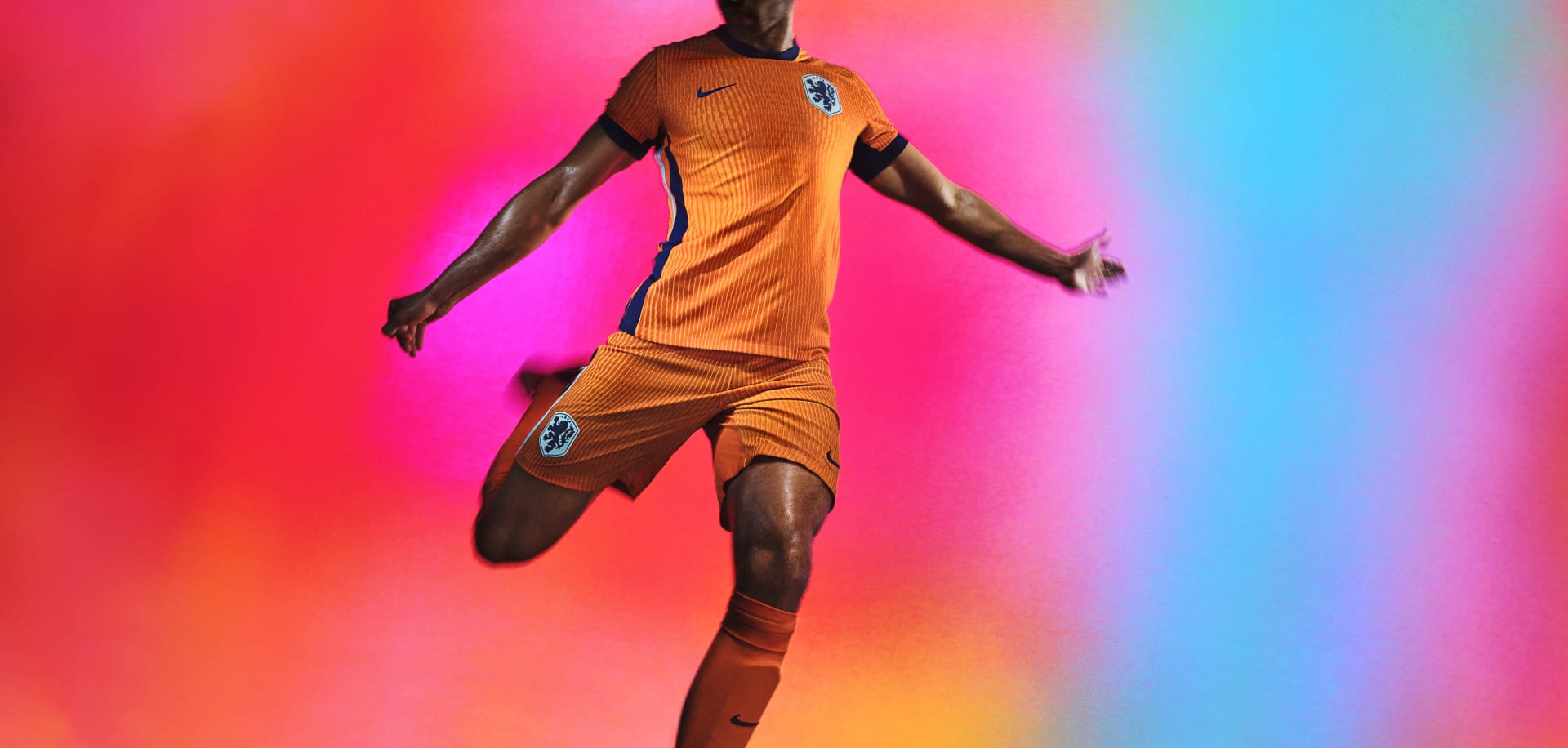
Nike could’ve offered anything orange here, and it would’ve been perfect. But the Netherlands has something bolder and better to wear. The zig-zag pattern adds edge.
Away

The orange collar and cuffs pop alongside the three shades of blue Nike has chosen to create the abstract design on this work of art.
Poland
Home

Poland dedicates premium real estate on the country’s home shirt to its imposing crest.
Away

Poland’s away shirt is a daring choice. The graphic treatment adds texture, giving it a rugged feel while separating from the red tones of years past.
Portugal
Home

With possibly the best home shirt in Nike’s collection, Portugal leans heavily into its traditional red-and-green motif with a polo collar and thick cuffs. The logo sits prominently as well. A smash hit.
Away

Here’s another winner. Portugal’s away strip has a stunning textile imprint that gives off a cool summer vibe.
Turkey
Home
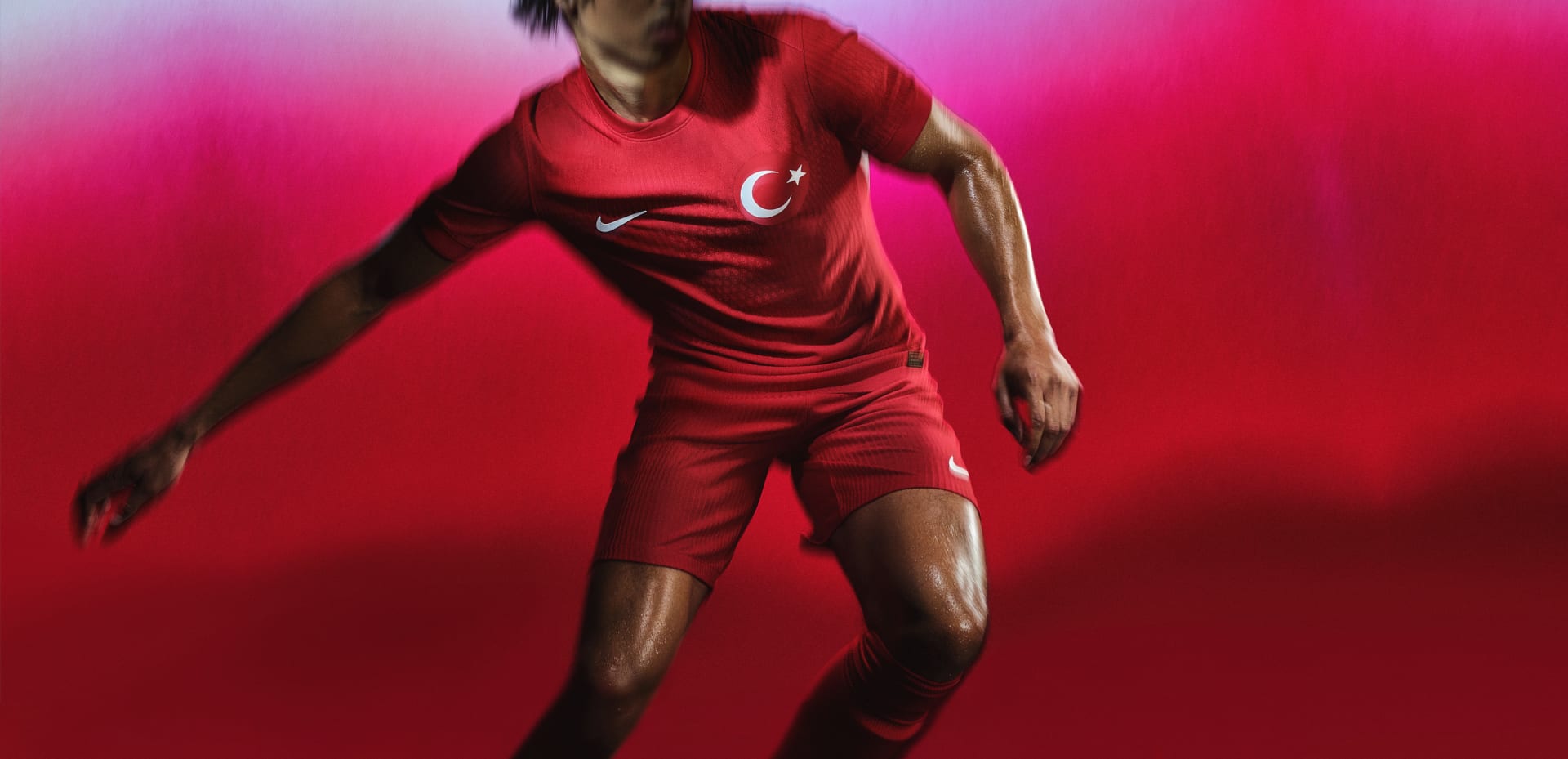
This is a menacing look. Turkey will look like a whirring red army with these imposing shirts.
Away

The classic red band returns to Turkey’s away uniform. Like the others, it features an oversized crest in the middle of the shirt.
Copa America
Brazil
Home

Nike goes big with Brazil’s crest and adds an intricate design to the same yellow hue the Selecao have used for decades.
Away

Brazil’s secondary strip feels like the beach. A horizontal wavy pattern covering the entire shirt mimics the country’s picturesque coastline.
Canada
Home

The only blemish in Nike’s lineup. Why is there a circle around the swoosh? And why are the shoulders so much darker than the body? None of it makes sense.
Away

The 13 pinstripes are supposed to represent the 10 provinces and three territories that make up Canada. Unfortunately, the rest of the shirt looks incomplete.
United States
Home

The United States men’s national team gets a classic home shirt with patriotic detailing along the color and sleeves.
Away

The gradient works perfectly with the red shorts the U.S. will wear at the Copa America.
Copyright © 2024 Score Media Ventures Inc. All rights reserved. Certain content reproduced under license.

Breaking down thrilling EPL title race with 10 games left

Euro 2024 playoffs: Miraculous Ukraine comeback, big result for Wales

Managerial merry-go-round: Predicting hires for marquee jobs

The Champions League's best XI so far

Ready Newest Trainer in Bundesliga History, retire SOLSKYER.

35 stars who will define the summer transfer window
Trending
-
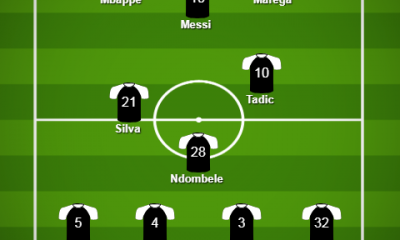
 Champions League7 years ago
Champions League7 years agoThe Champions League's best XI so far
-

 Sports6 years ago
Sports6 years agoReady Newest Trainer in Bundesliga History, retire SOLSKYER.
-
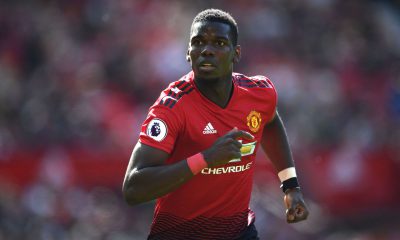
 Serie A6 years ago
Serie A6 years ago35 stars who will define the summer transfer window
-
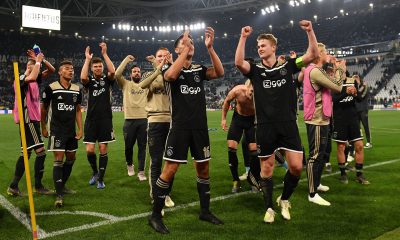
 Serie A7 years ago
Serie A7 years agoAjax show Juventus that winning requires more than individual quality
-
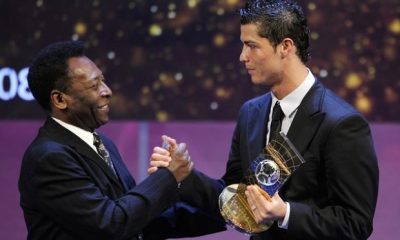
 Uncategorized5 years ago
Uncategorized5 years agoIFFHS publishes the list of top scorers in football history – Romario first, Ronaldo third
-
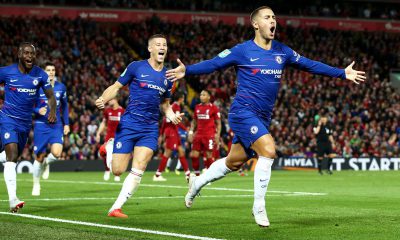
 Premier League6 years ago
Premier League6 years agoTransfer grades: Assessing Hazard’s move to Real Madrid
-
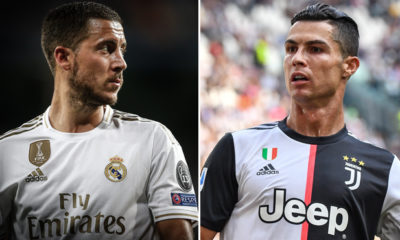
 Sports6 years ago
Sports6 years agoWenger: Hazard can’t replace Ronaldo.
-

 La Liga2 years ago
La Liga2 years agoLook: Adidas drops huge collection of new kits for Euro 2024, Copa America

